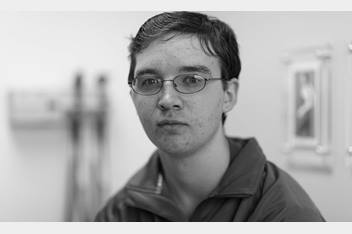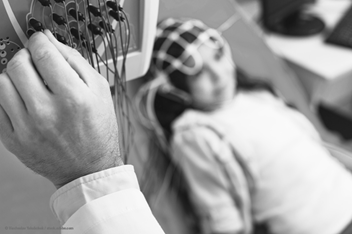Hemispherotomy and Hemispherectomy for Epilepsy
What is a Hemispherotomy and Hemispherectomy?
Hemispherotomy and hemispherectomy are surgeries that help treat severe epilepsy in children. These surgeries either disconnect or remove one side of the brain (called a hemisphere) to stop seizures that start on one side and spread to the other.- Hemispherotomy: Disconnects the damaged side of the brain without taking out brain tissue.
- Hemispherectomy: Removes part or all of the damaged side of the brain if needed.
Who is a Candidate for Hemispherotomy and Hemispherectomy?
Every child’s epilepsy journey is unique. The epilepsy team will review your child’s medical history, brain scans, and test results to decide if these surgeries are right for them. The surgeries might be an option if:- Seizures come from one side of the brain: Your child’s seizures are happening in just one side of the brain.
- Seizures are frequent or intense: Your child’s seizures happen often and affect their development or daily life.
- Seizures aren’t controlled by medication: Your child’s seizures continue even after trying different anti-seizure medicines.
- Medication side effects: Your child experiences serious side effects from anti-seizure medicines.
- Other treatments haven’t worked: Your child is not a candidate for other epilepsy surgeries, or these surgeries haven’t worked in the past.
These surgeries may help your child with certain conditions, including:
- Rasmussen’s encephalitis: A disease that causes seizures and loss of function on one side of the brain.
- Hemimegalencephaly: When one side of the brain grows abnormally and causes seizures.
- Sturge-Weber syndrome: A condition that causes seizures and delays, usually on one side of the brain.
- Stroke: Brain damage that causes hard-to-control seizures.
What are the Benefits of Hemispherotomy and Hemispherectomy?
The main goal of hemispherotomy and hemispherectomy surgeries is to stop your child’s seizures when medicines and other treatments haven’t worked. This can help your child be safer and more independent. It can also improve their quality of life, giving them more chances to grow, learn and develop new skills. For many children, these surgeries can also mean fewer or lower doses of anti-seizure medications, which can minimize side effects.What are the Risks of Hemispherotomy and Hemispherectomy?
Hemispherotomy surgeries, like any other major medical procedure, come with certain risks, including:
- Infection: There is a chance of infection in the areas where the surgery was performed.
- Bleeding or swelling in the brain: Bleeding or swelling could occur after the procedure and might require additional treatment.
- Weakness on one side of the body: After surgery, your child will experience weakness or loss of movement on one side of their body. This happens because one side of the brain controls movement on the opposite side of the body. This weakness can improve over time with therapy.
- Hydrocephalus: Hydrocephalus is a condition where too much fluid builds up in the brain. If it occurs, doctors may need to place a small tube, called a shunt, in the brain to drain the extra fluid and relieve pressure.
- Continued seizures: Some children may still experience seizures after surgery.
- Pain or discomfort: Your child may feel temporary pain or discomfort at the incision sites or around the device after surgery. This is usually manageable with medication.
What Happens During a Hemispherotomy and Hemispherectomy?
Your child will be given anesthesia to ensure they are asleep and pain-free. The surgeon will make an incision on your child’s head and remove a portion of the skull. The following will occur depending on the type of procedure:
- Hemispherotomy: The surgeon will carefully disconnect the unhealthy side of the brain from the rest of the brain. A small amount of brain tissue will be removed. A tiny drain will be placed to remove extra fluid. The surgeon will then close the area, put the skull piece back in place, and close the skin with stitches or staples.
- Hemispherectomy: The surgeon will carefully remove parts or all of the unhealthy side of the brain. After the procedure, the surgeon will leave a small drain to help remove extra fluid. The surgeon will then close the surgical site. The skull piece that was removed will be placed back and the skin opening will be closed with stitches or staples.

What Happens After a Hemispherotomy or Hemispherectomy?
After the surgery, your child will start recovery in the Pediatric Intensive Care Unit (PICU). Pain will be managed with medicine, and your child’s care team will watch for any signs of complications, such as swelling or infection.
A few days later, your child will be moved to the neurosurgery floor to continue their recovery. Therapists will begin working with your child to help them regain important skills like moving and speaking.
When your child is ready to leave the hospital, they may go to the Nationwide Children’s Inpatient Rehab Unit if they need more intensive therapy, or they may go home to continue therapy as an outpatient. Regular follow-up appointments in our clinic are needed to monitor progress and make any adjustments to their medications. Recovery takes time but your care team will support your child every step of the way.
Medical Reviewer: Ammar Shaikhouni, MD, PhD, Nationwide Children's Hospital
Date Last Reviewed: 7/25/2025
The information provided here is only for general reference and should not take the place of medical care or patient education. If you have any questions, please call our Epilepsy Surgery Clinic at (614) 722-4625.


